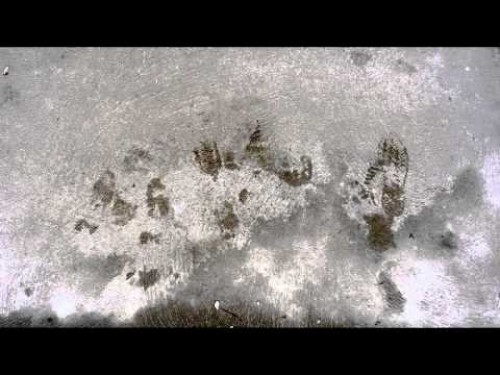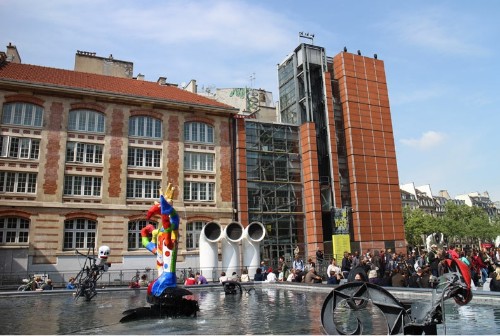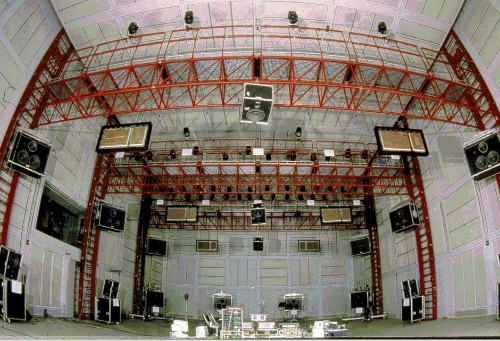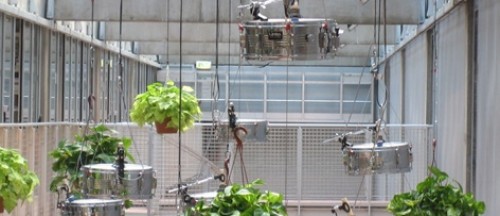Yarn/Wire at the Lincoln Center Festival
World Premieres by Murail, Misato Mochizuki, Raphaël Cendo
By: Susan Hall - Jul 15, 2015
Yarn/Wire
Tristan Murail: Travel Notes (World Premiere)
Misato Mochizuki: Le monde des ronds et des carrés (World Premiere)
Raphaël Cendo: Direct Action (World Premiere)
Piano Laura Barger and Ning Yu
Percussion Ian Antonio and Russell Greenberg
Stanley Kaplan Penthouse
Lincoln Center Festival
New York, New York
July 15, 2015
Yarn/Wire is an innovative ensemble committed to performing contemporary music works. The evening's program focused on three composers, two French and one Japanese. All three have spent time studying and teaching at the Institute for Research and Coordination in Acoustics/Music (IRCAM) in Paris. Pierre Boulez headed the Institute for many years. It is housed in the Pompidou Center and was recently renovated by Renzo Piano.
Yarn/Wire commissions works for their unique group: two percussionists and two pianists. Laura Barger, a founder, points out that the piano is a percussion instrument. Compositions emphasize the piano's infinite sound beats. The hammers striking against wire vibrate. One composer alters them with tin foil. The many partials into which a vibrating wire divides can be emphasized by sequence.
Never are the beautiful tones created by reflecting waves abandoned.
Tristan Murail is a grand master of spectral music. He studied with Olivier Messiaen at the Paris Conservatory, and the sound clouds of the 19th century lead directly to Messiaen's compositions and on to Murail's. While it's said that today Americans compose with melody and Europeans for sound textures, Murail's Travel Notes often lofted melody as Barger and her fellow pianist Ning Yu performed.
Listeners, eyes closed and basking in the sounds alone, may experience colors and images, because the music suggests them. Textures evoke soft and ragged edges; ripped arpeggios and scales, tumbling water and a roomful of tinkling bells. Buzzing bees and sirens erupt from odd shapes and bows. Perfumed French sounds are triggered by brief, sharp explosions. Miraculously the performers pass the sound one to the other so the music feels like a whole.
Rhythm is often loose. You sense speeding up and slowing down without a specified underpinning or beat. Everything works to turn the listener over to the music and give up his independent ear, to be absorbed and then cast off.
Misato Mochizuki also studied at IRCAM. Talking about her composition, she explained the piece's origin in ideas about Japan. Some say Japan is round and some say it's square and perhaps the two can meet.
A set of drums sits temptingly unused as Le Monde unfolds, but soon enough Ian Antonio picks up a stick and is joined by Russell Greenberg. Suddenly the two ladies leave their pianos and join them, beating away. If I were composing for Barger, I would let her take a super ball stick to the piano's pedals. She is a percussionist at heart which is why she is such a talented pianist. The clashes are round and square getting together?
Raphaël Cendo uses whatever sounds right to realize what he hears in his mind's ear. Ning Yu clutched a whiskey flask to sweep over the piano's strings. Antonio looked like he was whisking a championship trophy. It may well have been one.
This piece was more wire than yarn. Sounds were often harsh, conflicting, loud. But even in extremis, the composition delighted. When Barger slammed the keylid against the piano's casement, I laughed. The composer had given her just what she wanted: a percussionist's unexpected moment.
Drums may be the violins of the 21st century. The stage was filled with vibraphones, marimbas, tubular bells, gongs, rattles, drums and other items planned to be hit, struck or whaled on.
What is most striking is that you don't have to understand or think about any of this to appreciate and enjoy the performance of original, 21st century music by the pianists and percussionists of Yarn/Wire.
We couldn't wait to hear them in concert again after a performance at the Miller Theatre earlier this year.
The ensemble has a real feel for the polyrhythms the bring out eloquence and expression for listeners who simply can't resist the music that emerges. Percussive sounds are now crucial to sonic personality. Yarn/Wire shows us their full resplendence.
Raphaël Cendo uses whatever sounds right to imagine his composition. Ning Yu clutched a whiskey flask to sweep over the piano's strings. Antonio looked like he was whisking a championship trophy. It may well be one.
This piece was more wire than yarn. Sounds were often harsh, conflicting, loud. But even in extremis, the composition delighted. When Barger slammed the keylid against the piano's casement, I laughed. The composer had given her just what she wanted: a percussionist's unexpected moment.
Drums may be the violins of the 21st century. The stage was filled with vibraphones, marimbas, tubular bells, gongs, rattles, drums and assorted items to be hit, struck or whaled on.
What is most striking is that you don't have to understand or think about any of this to appreciate and enjoy the performance of original, 21st century music by the pianists and percussionists of Yarn/Wire.
We couldn't wait to hear them in concert again after a performance at the Miller Theatre earlier this year.
The ensemble has a real feel for the polyrhythms the bring out eloquence and expression for listeners who simply can't resist the music they produce. Percussive sounds are now crucial to sonic personality.
Yarn/Wire shows us their full resplendence.








